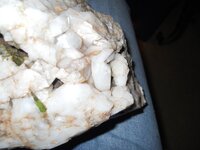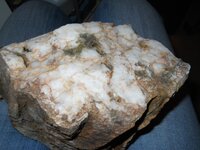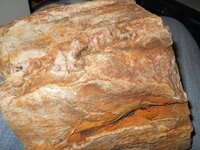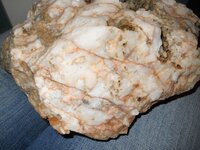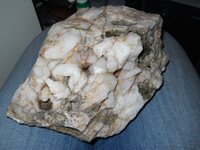NaturalMyztic
Tenderfoot
Hello Everyone,
Newbie here from Texas. I found this rock and am curious about what type it could be. I did notice what seemed to be a couple of translucent quartz (crystals?). I've taken pictures from varying angles. Any ideas? I'm thinking bull quartz or feldspar. I'm so tempted to bust up this rock & see what's inside!
Newbie here from Texas. I found this rock and am curious about what type it could be. I did notice what seemed to be a couple of translucent quartz (crystals?). I've taken pictures from varying angles. Any ideas? I'm thinking bull quartz or feldspar. I'm so tempted to bust up this rock & see what's inside!


